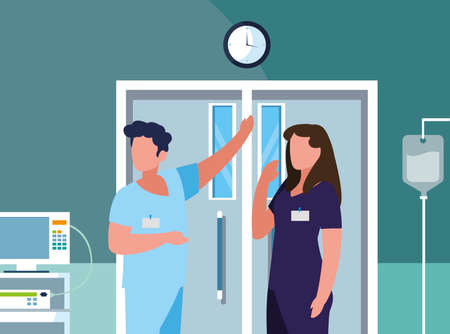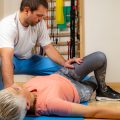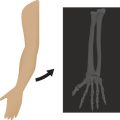Introduction to Manual Therapy and IASTM
When it comes to hands-on treatment in UK physiotherapy, two techniques often come to the fore: manual therapy and instrument-assisted soft tissue mobilisation (IASTM). Both approaches share a common goal—improving movement, reducing pain, and supporting recovery—but they differ in their methods and historical roots. Manual therapy has long been a cornerstone of British physio practice, dating back over a century. It encompasses a range of skilled hand movements, including joint mobilisation, manipulation, and soft tissue techniques, all tailored to address musculoskeletal dysfunctions. In contrast, IASTM is a relatively recent addition to the British therapist’s toolkit. Adapted from traditional manual methods and influenced by global trends such as Graston Technique from the US and Gua Sha from East Asia, IASTM uses specially designed tools to mobilise soft tissues more efficiently and precisely. As UK clinicians strive for evidence-based care, understanding the evolution and application of these two methods is key to making informed treatment choices for patients.
2. Traditional Hands-On Techniques: The British Approach
When it comes to manual therapy, the UK has a proud heritage grounded in both tradition and evidence-based practice. From my own experience working alongside British physios, osteopaths, and sports therapists, there’s a strong emphasis on hands-on skill and the subtlety of touch—a quality that’s hard to quantify but makes all the difference for patients. Let’s take a closer look at some of the classic manual therapy techniques commonly taught and practised across the country.
The Cornerstones of Manual Therapy in the UK
British training programmes focus heavily on developing palpation skills, anatomical understanding, and clinical reasoning. Some of the most widely used techniques include:
| Technique | Main Purpose | Typical Application |
|---|---|---|
| Soft Tissue Mobilisation | Reduce muscle tension, improve blood flow | Muscle strains, post-exercise recovery |
| Joint Mobilisations (Grades I-IV) | Restore joint mobility, reduce pain | Knee injuries, shoulder impingement |
| Myofascial Release | Address fascial restrictions, promote relaxation | Chronic tightness, fibromyalgia |
| Trigger Point Therapy | Alleviate localised pain points | Tension headaches, upper back pain |
| Maitland & Mulligan Concepts | Specific joint mobilisations based on patient response | Spinal dysfunctions, persistent joint pain |
A Distinctively British Emphasis on Communication and Consent
One thing I’ve noticed is how much British practitioners value informed consent and clear communication during treatment. There’s often a running commentary—explaining what’s being done and why—which not only reassures patients but also builds trust. This approach is woven into both NHS and private practice standards.
Real-World Insights from Clinic Life
In everyday practice, you’ll see therapists blending these techniques based on individual needs rather than sticking rigidly to protocols. For example, after assessing a rugby player with acute hamstring tightness, I might start with gentle soft tissue mobilisation before progressing to more specific trigger point work if needed. There’s an art to knowing when to use which technique—and that comes from both training and learning on the job.
Cultural Nuances: The Value of ‘Hands-On’ Care in the UK Context
The British public generally holds hands-on therapy in high regard—there’s almost an expectation that seeing a physio or osteo means you’ll get some manual treatment. While new modalities are gaining ground (as we’ll discuss later), traditional manual therapy remains a cornerstone of musculoskeletal care throughout the UK.

3. Rise of Instrument-Assisted Soft Tissue Mobilisation
In recent years, instrument-assisted soft tissue mobilisation (IASTM) has started to gain significant traction across clinics throughout the UK. While manual therapy remains a cornerstone of physiotherapy practice, there is no denying the growing presence of IASTM tools on treatment trolleys from London to Leeds. This shift can be partly attributed to British practitioners’ desire to stay at the forefront of evidence-based practice and their willingness to explore modalities that might enhance patient outcomes or improve therapist ergonomics.
The professional attitude towards adopting IASTM in the UK is a blend of curiosity, cautious optimism, and traditional pragmatism. Many experienced clinicians recall their initial scepticism—after all, British healthcare culture often values tried-and-tested methods over flashy novelties. However, as more robust research emerges and colleagues begin sharing positive experiences, attitudes are evolving. There’s a sense that IASTM is not about replacing hands-on skills but rather complementing them, providing another tool for the toolkit especially when facing complex or persistent soft tissue issues.
UK-based physios also appreciate how IASTM can help manage clinician fatigue and reduce repetitive strain injuries—a practical concern given the high caseloads within both NHS and private settings. Peer-led workshops and CPD courses across Britain now regularly include sessions on these techniques, reflecting growing acceptance and a collective willingness to adapt where it benefits both practitioner and patient. That said, most British therapists remain grounded in their approach: any new tool must ultimately prove its worth in clinical results, not just marketing claims.
4. Clinical Effectiveness: What Does the Evidence Say?
When comparing manual therapy to instrument-assisted soft tissue mobilisation (IASTM) from a UK perspective, it’s essential to scrutinise not just the theoretical benefits but also what clinical evidence and real-world experiences reveal about their effectiveness. Both approaches have passionate advocates, but how do they truly stack up in terms of outcomes, patient preferences, and current research findings within the UK context?
Clinical Outcomes: Head-to-Head Comparisons
Recent UK-based studies and clinical audits suggest both manual therapy and IASTM can deliver positive results for musculoskeletal pain, mobility restrictions, and soft tissue dysfunctions. However, nuances emerge when we delve into specific outcome measures:
| Aspect | Manual Therapy | IASTM |
|---|---|---|
| Pain Reduction | Effective for acute & chronic pain; strong evidence in spinal & peripheral conditions | Comparable pain reduction, especially for tendinopathies & myofascial pain |
| Range of Motion (ROM) | Improves ROM via joint mobilisation & muscle lengthening | Often more pronounced short-term ROM gains after treatment sessions |
| Tissue Healing | Facilitates healing through increased circulation & neuromodulation | Potentially accelerates collagen remodelling; growing support in soft tissue repair literature |
| Function/Return to Activity | Well-supported for gradual return to function with ongoing management | May speed up early functional gains but long-term outcomes align with manual therapy |
Patient Preferences: What Do UK Patients Want?
From personal experience working in NHS clinics and private practice, UK patients often express clear preferences based on their prior knowledge, expectations, and comfort levels. Many value the traditional hands-on approach of manual therapy, citing feelings of reassurance and connection with the therapist. However, younger or sport-oriented patients are increasingly receptive to IASTM, appreciating its modernity and perceived efficiency. Feedback from local patient surveys indicates:
- Manual Therapy: Preferred by those who seek a personalised touch and familiar techniques.
- IASTM: Favoured among those desiring quicker sessions or who have experienced stubborn soft tissue issues unresponsive to other methods.
Current UK-Based Research Findings
The body of research emerging from UK universities and clinical settings has grown steadily over the past decade. Key findings include:
- No significant long-term difference in outcomes between manual therapy and IASTM for common musculoskeletal complaints.
- Certain patient populations—such as those with chronic tendinopathy—may experience faster initial symptom relief with IASTM.
- A combined approach is often favoured by clinicians for maximising both immediate and sustained results.
- NHS guidelines increasingly recommend tailoring interventions to individual needs rather than prioritising one modality over another.
The Bottom Line: Context Matters
Ultimately, while both manual therapy and IASTM offer credible pathways toward recovery, the best choice hinges on patient preference, specific condition, clinical setting, and practitioner expertise—a sentiment echoed widely across UK physiotherapy circles.
5. Patient Perception and Cultural Expectations
When it comes to manual therapy versus instrument-assisted soft tissue mobilisation (IASTM), the perception among British patients is shaped by a unique blend of tradition, cultural expectations, and communication style. Manual therapy has long been considered the “gold standard” in many UK clinics, often associated with a hands-on, personal approach that resonates with the British preference for trust and human connection in healthcare. Many patients view manual therapy as a sign of practitioner skill, expertise, and investment in their individual care—a sentiment deeply rooted in UK physiotherapy culture.
On the other hand, IASTM can sometimes be perceived as more clinical or even impersonal, especially by those unfamiliar with its benefits. Some British patients may initially regard instruments as a shortcut or less “authentic” method, reflecting a broader scepticism towards technology replacing traditional skills. However, as awareness grows and practitioners take the time to explain the science behind IASTM, this perception is gradually shifting.
Communication Nuances in the UK Setting
The success of either approach hinges significantly on communication—an area where subtlety and reassurance matter greatly in the UK. British patients typically value clear explanations without unnecessary jargon but also appreciate discretion and empathy. Practitioners who take time to discuss treatment choices, acknowledge patient preferences, and address concerns about discomfort or efficacy tend to foster greater trust. This is particularly important when introducing IASTM, where transparency about sensations during treatment and expected outcomes can make all the difference in patient acceptance.
Cultural Preferences: Hands-On vs. High-Tech
It’s not uncommon for British patients to favour what feels familiar and personal. The warmth of hands-on therapy can carry symbolic weight—especially among older generations or those who have had positive experiences in the NHS system. For these individuals, manual therapy represents continuity and care. Conversely, younger or more tech-savvy patients may be more open to innovative modalities like IASTM, seeing them as modern and potentially more effective for certain conditions.
Shaping Expectations Through Experience
Ultimately, British patient expectations are shaped by experience and word-of-mouth within their communities. Positive outcomes—whether from manual therapy or IASTM—lead to increased openness over time. As clinicians continue to tailor their approach with sensitivity to these cultural nuances, both techniques can find their place in UK practice, provided they are delivered with respect for patient values and transparent communication.
6. Lived Experience: Reflections from UK Therapists
For many UK physiotherapists and osteopaths, the debate between manual therapy and instrument-assisted soft tissue mobilisation (IASTM) is more than just a theoretical discussion—it’s a daily reality shaped by patient needs, clinical setting, and professional judgement. Drawing from my own practice in London and conversations with colleagues across the NHS and private clinics, it’s clear that the choice often hinges on experience, personal philosophy, and practical constraints rather than textbook answers.
Real-World Challenges
One recurring challenge is time. As one seasoned NHS physio put it, “Manual therapy can be incredibly effective, but with packed clinics and tight appointment slots, sometimes IASTM tools help me deliver consistent results quickly.” That said, some therapists find that patients in the UK tend to expect hands-on care—there’s an ingrained trust in traditional manual techniques. “Many of my patients see the value in touch,” shares a fellow osteopath from Manchester. “They feel reassured when I use my hands to assess and treat.”
Navigating Patient Expectations
Managing expectations is another key lesson. Some patients are sceptical about ‘gadgets’ or perceive instrumented techniques as less personal. “Communication is essential,” reflects an East Midlands physiotherapist. “I always explain why I’m using an instrument—whether it’s to break down scar tissue or speed up recovery. Most are open-minded if they understand the rationale.”
Integrating Approaches for Better Outcomes
What stands out across interviews is that few clinicians rely exclusively on one approach. The best outcomes often come from blending both methods based on individual cases. A senior therapist in Bristol puts it plainly: “It’s not about which is better overall—it’s what works best for this person, today.” For complex musculoskeletal issues or chronic pain, starting with gentle manual therapy before progressing to IASTM can strike the right balance between comfort and effectiveness.
Ultimately, the lived experience of UK therapists underscores that there’s no one-size-fits-all solution. It’s about drawing on your clinical toolkit—and learning from every patient who walks through the door.


